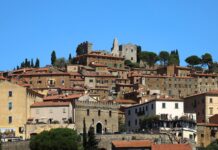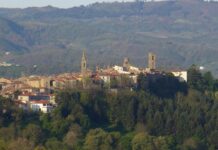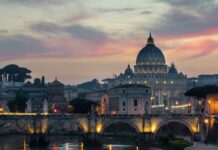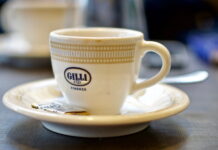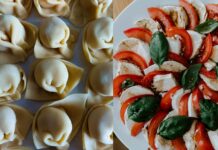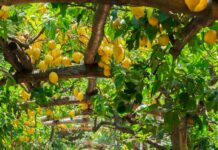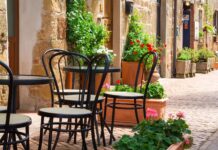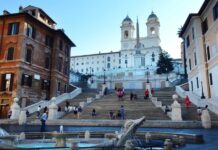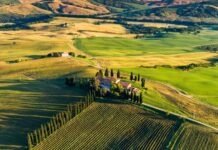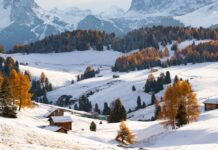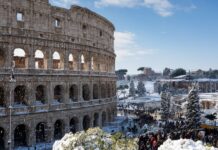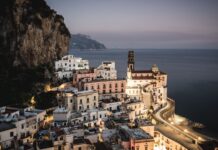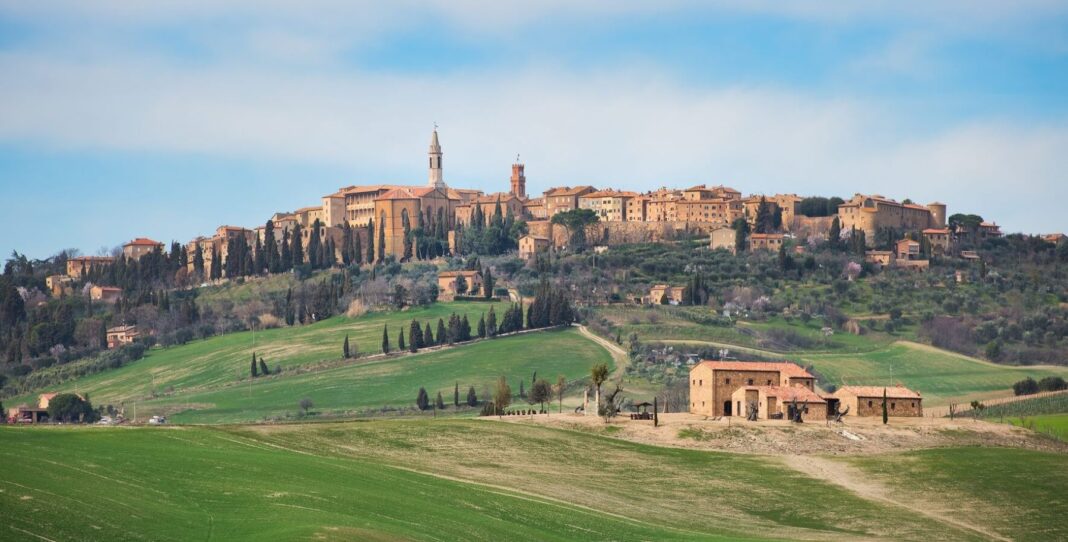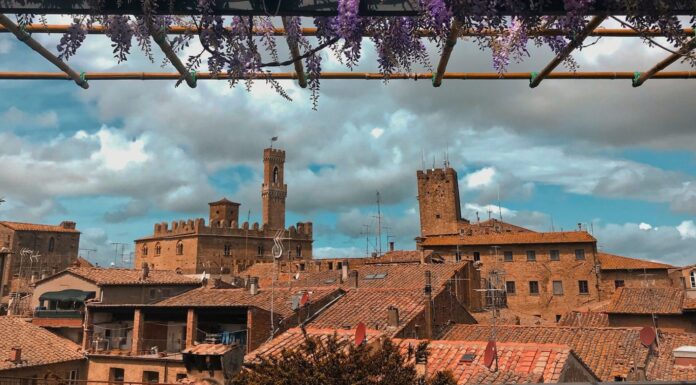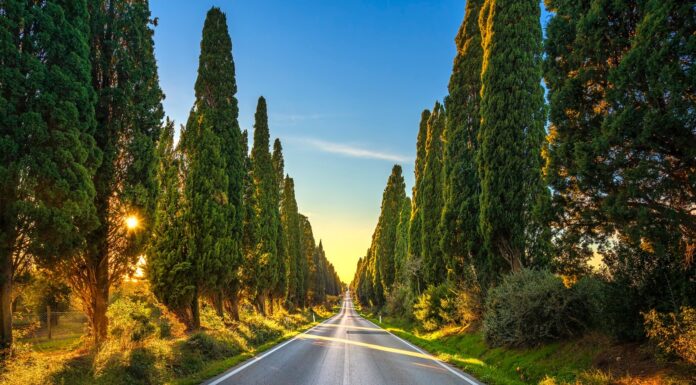Pienza is nestled in the Val d’Orcia: an area rich in cultural identity, impressive food traditions, and rich history. Idealized in the ambition of Pope Pius II, Pienza was designed as the “idealized” city of Renaissance urban planning.
Pienza is a well-loved Tuscan town, sought out for its quaint charm, delicious food, and historical buildings. People are drawn to visit Pienza to witness the impact of the Pope’s vision on its Renaissance architecture, to taste its local wines and pecorino sheep’s milk cheese, and to tour neighboring small towns and churches while taking in the stunning valley landscape that surrounds the town.
From the historic center’s cathedral and palaces, to the sweeping views of the valley as you drive to neighboring towns, to sampling local meats and cheeses, the sights and senses of a visit to Pienza are sure to make a lasting impression!
Where is Pienza in Italy & How To Get There
Pienza is located in the province of Siena in the region of Tuscany, nestled in the historic Val d’Orcia, or Valley of Orcia. The town can be found about 14 miles south of Florence, between the larger cities of Siena and Perugia.
Not very accessible by public transportation, Pienza has no train service or station. If you’re up for a few transfers and a bit of an adventure, you can take a bus into Pienza from some nearby towns that do have train stations, such as Buonconvento or Montepulciano.
By far the easiest way to get to Pienza is by car, and an added benefit is that it will allow you to explore the nearby countryside and neighboring towns.
If you want to take a train as far as you can, you can rent a car in a larger city such as Florence or Siena.
6 Things to See in Pienza
1. The Town Center: Piazza Pio II
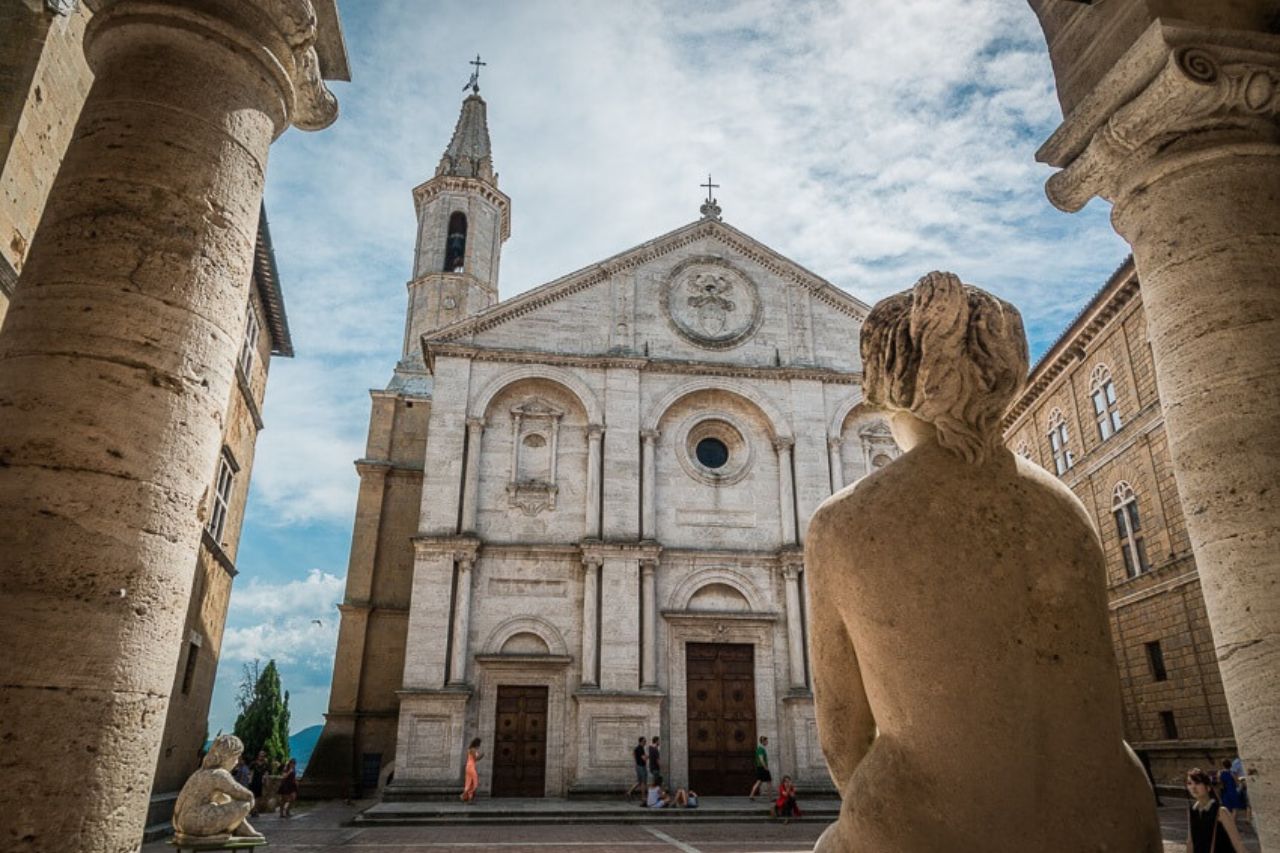
The main piazza or town square of Pienza holds the most famous buildings related to Pope Pius II’s revitalization and idealization of the town. A more contemporary claim to fame, it has also been a filming location for the 1996 movie The English Patient, winner of nine Academy Awards. From this square, you can easily explore beautiful buildings including the Cathedral, the Palazzo Borgia, and Palazzo Piccolomini.
You can purchase an all-inclusive pass to access Palazzo Piccolomini, Palazzo Borgia, and the Cathedral (including its Crypt and Labyrinth) for €12.
2. Cathedral of Santa Maria Assunta
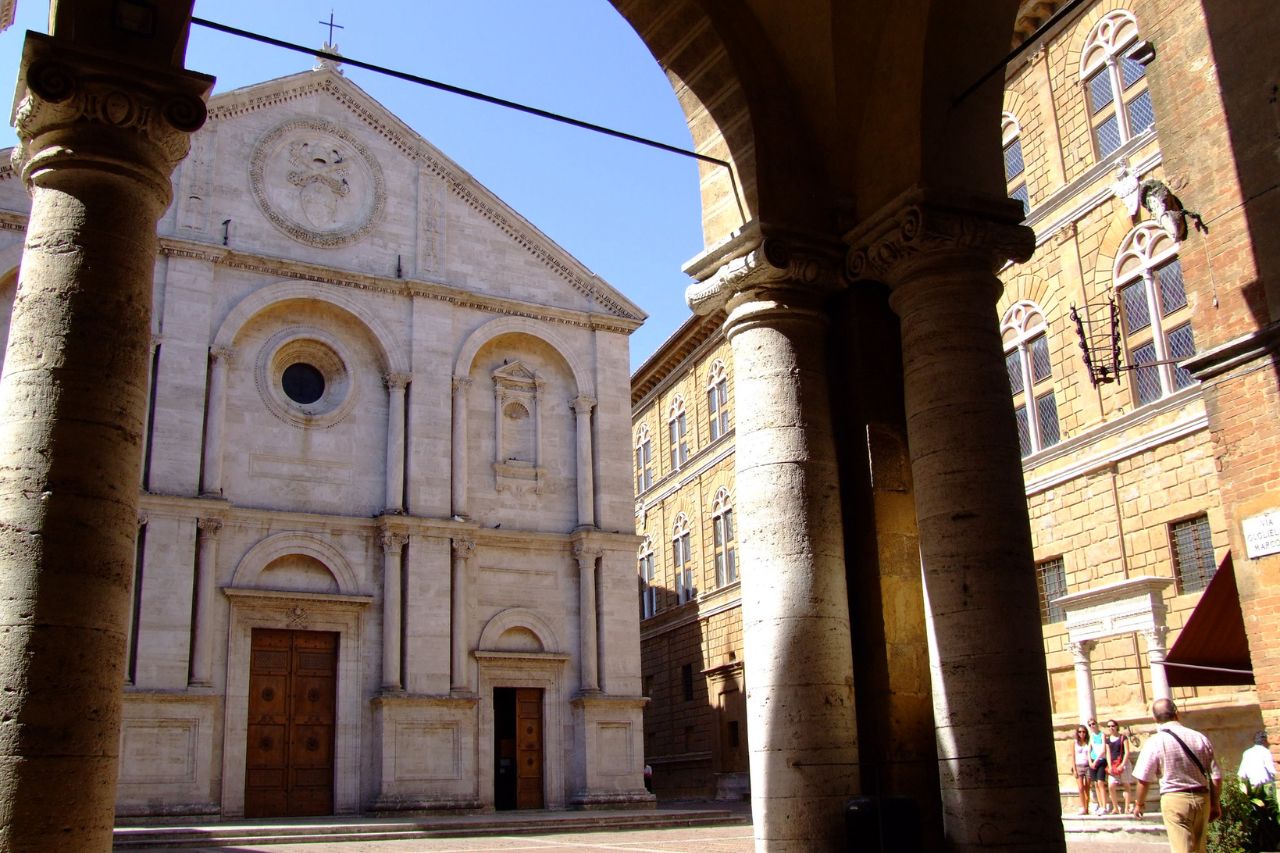
Pienza’s Cathedral, dedicated to the Assumption of the Virgin Mary is a UNESCO site. This was the site of the center of Pope Pius II’s plan to revitalize the town into an ideal. The current Cathedral was built on the site of an existing and much smaller Church of Santa Maria, from 1459 to 1462, when it was then consecrated by Pius II himself.
On the facade of the Cathedral, you will find the coat of arms of Pius. Also note the belltower, which was damaged in 1545 by an earthquake and not repaired until 200 years later. Inside you will find many famous works of art, including Assumption by Vecchietta and the Madonna and Child Enthroned with Saints by Matteo di Giovanni. The interior was designed to be brightly illuminated. If you have time, be sure to check out the crypt under the cathedral, which houses a baptismal font by Rossellino and a labyrinth.
3. Palazzo Borgia
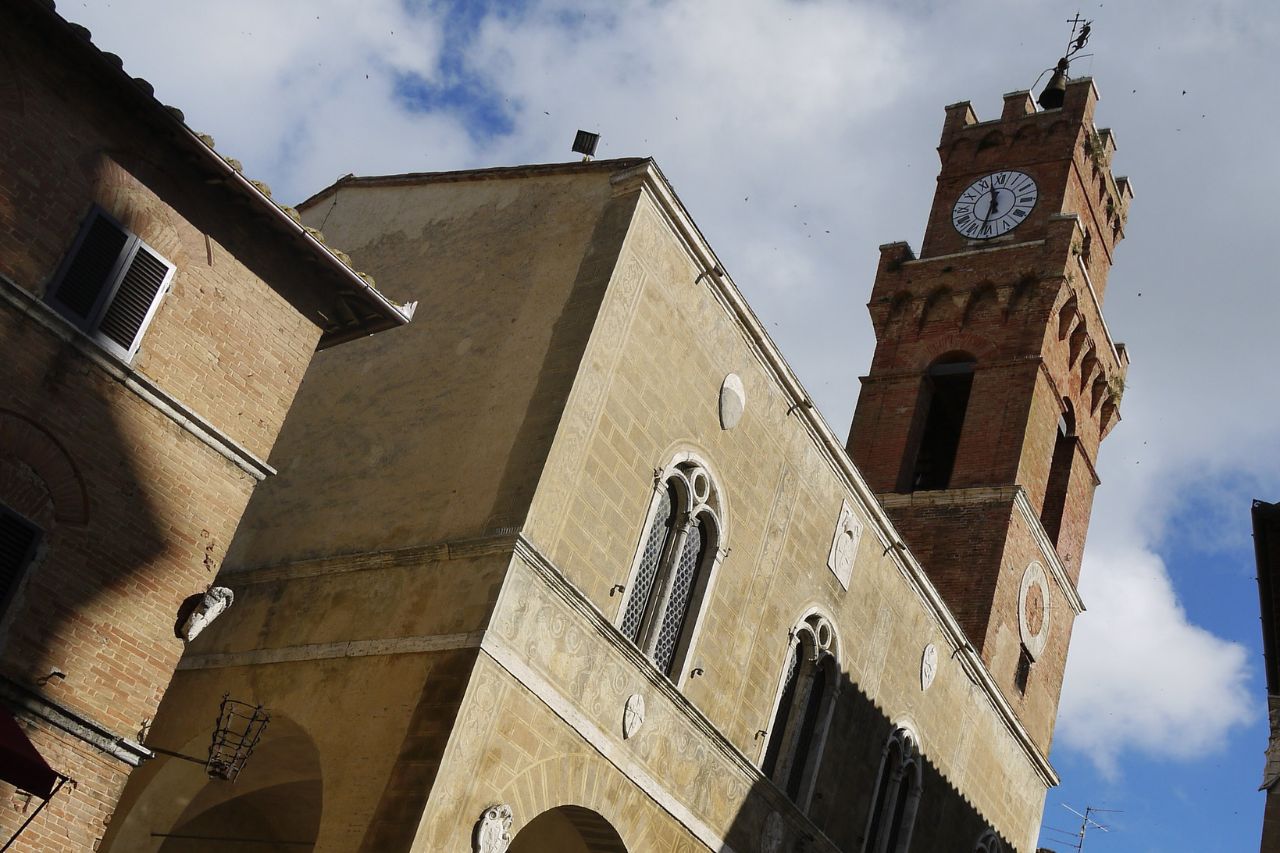
Pius gifted this building to Cardinal Rodrigo Borgia, future Pope Alexander VI. It now houses a Diocesan Museum, which boasts a collection of art and sacred vestments. Of note is its collection of objects made in gold, with pieces originating from the 13th through 19th century, and including religious objects donated by Pius II when Pienza’s Cathedral was built: a pastoral, a mitre, a thurible, an aspergillum, and the famed “Cape of Pius II” which was made using an elaborate embroidering technique and details important religious scenes.
4. Palazzo Piccolomini

The Palazzo Piccolomini was built as a summer home for Pope Pius II in Pienza. This palazzo offers another stunning example of the idealized Renaissance architecture and features a garden and secret rooms. It was designed to keep the inhabitants warm and comfortable and was used as a residence for the Piccolomini family until the 1960s. The second floor provides stunning views across the valley.
5. The Alleys and the Bastions
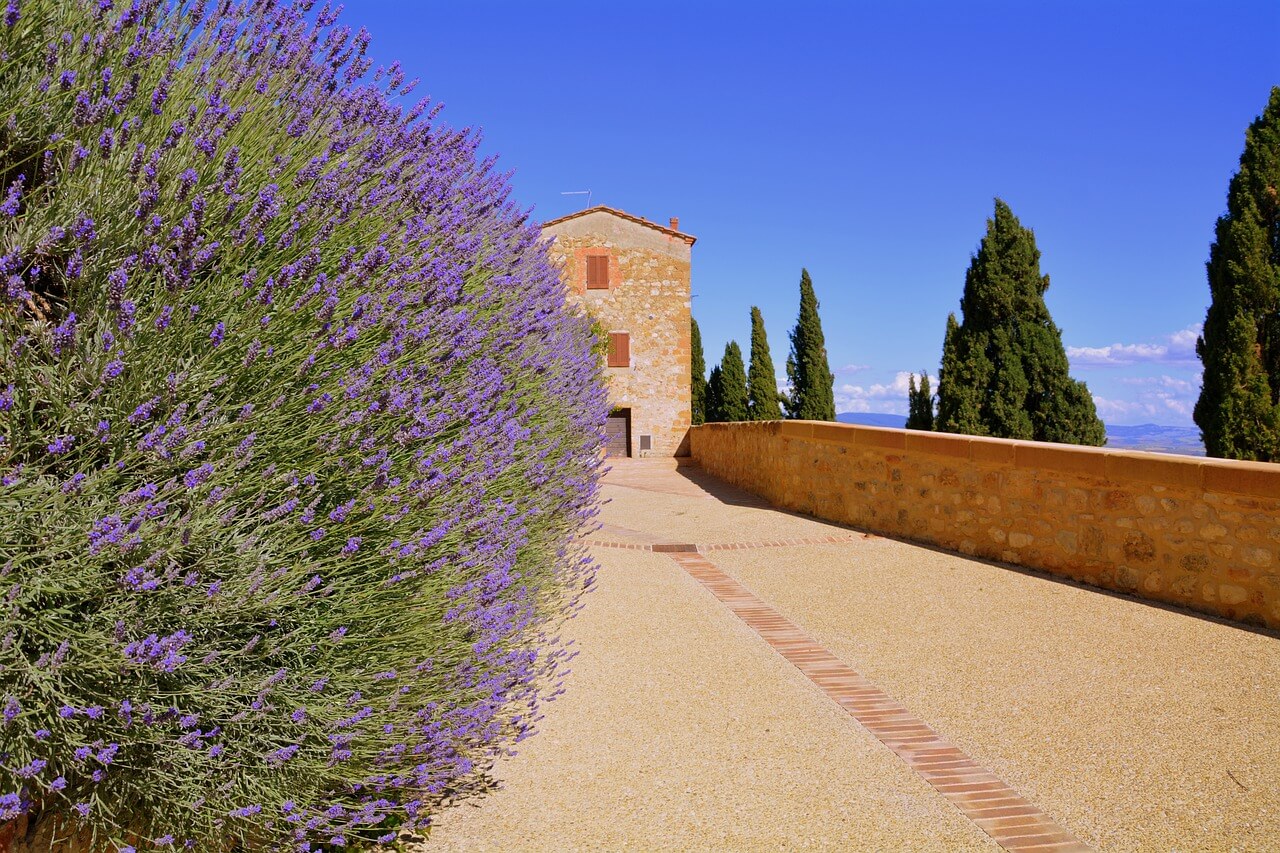
The alleys and fortress elements of Pienza’s old town offer classical Tuscan medieval remnants, now beautified for touring charm! The famous winding alleys are picture-perfect and are lined with promising options for shopping and dining. The town’s bastions have been converted to a scenic walkway and will catch your eye as you enter the town. From the walkway, you will find sweeping views of the Valley of Orcia.
6. Pieve di Corsignano
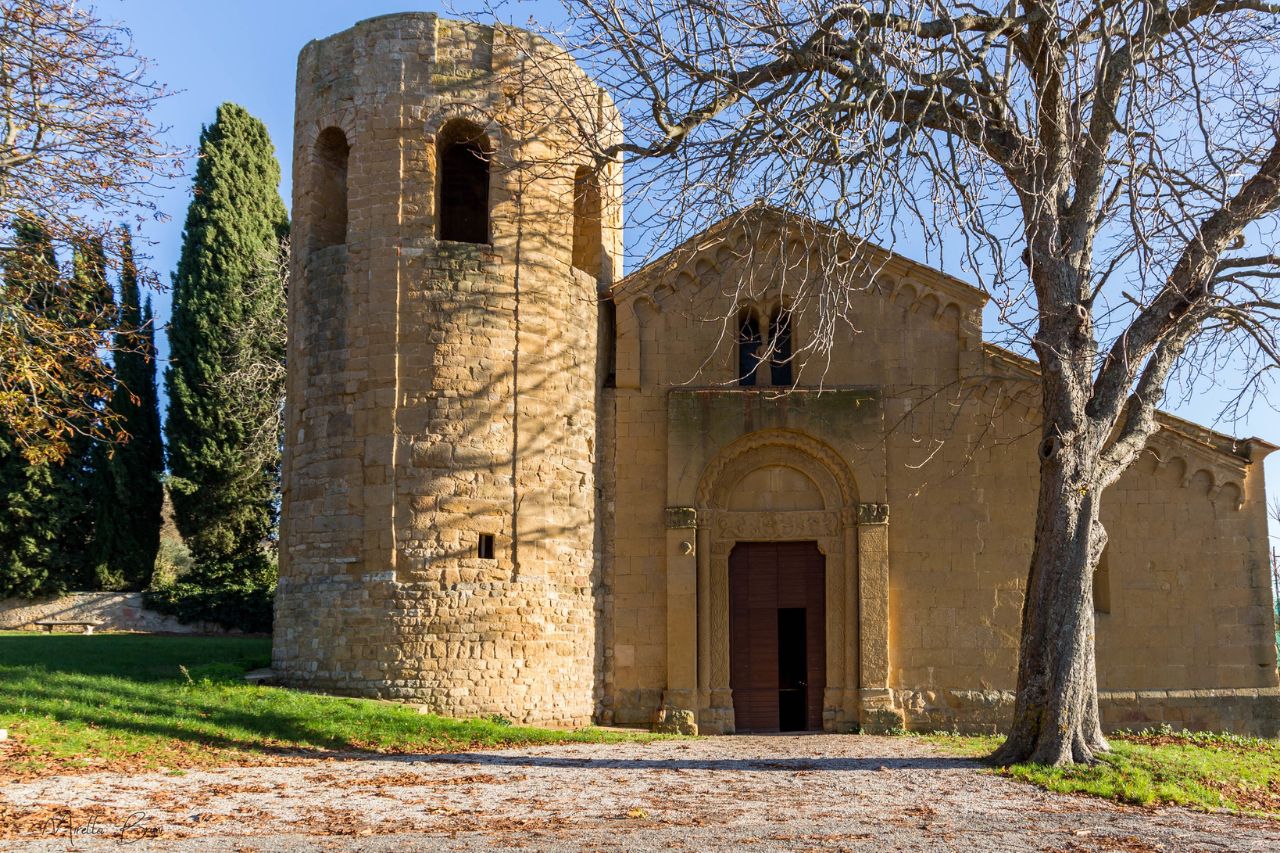
A 1km walk outside the city walls will bring you to the church of Pieve di Corsignano. The name pieve means parish church, and Corsignano was the original name of Pienza prior to Pope Pius II’s renovations. The church dates back to the 8th century, when it was dedicated to Saints Vito and Modesto. This was the site of Pope Pius II’s baptism, though he was Enea Silvio Piccolomini at the time. His nephew, who would become Pope Pius III, was also baptized here. The baptismal font that was the site of both Pope’s sacraments remains inside the church.
Things to Do in Pienza
Taste the Pecorino of Pienza
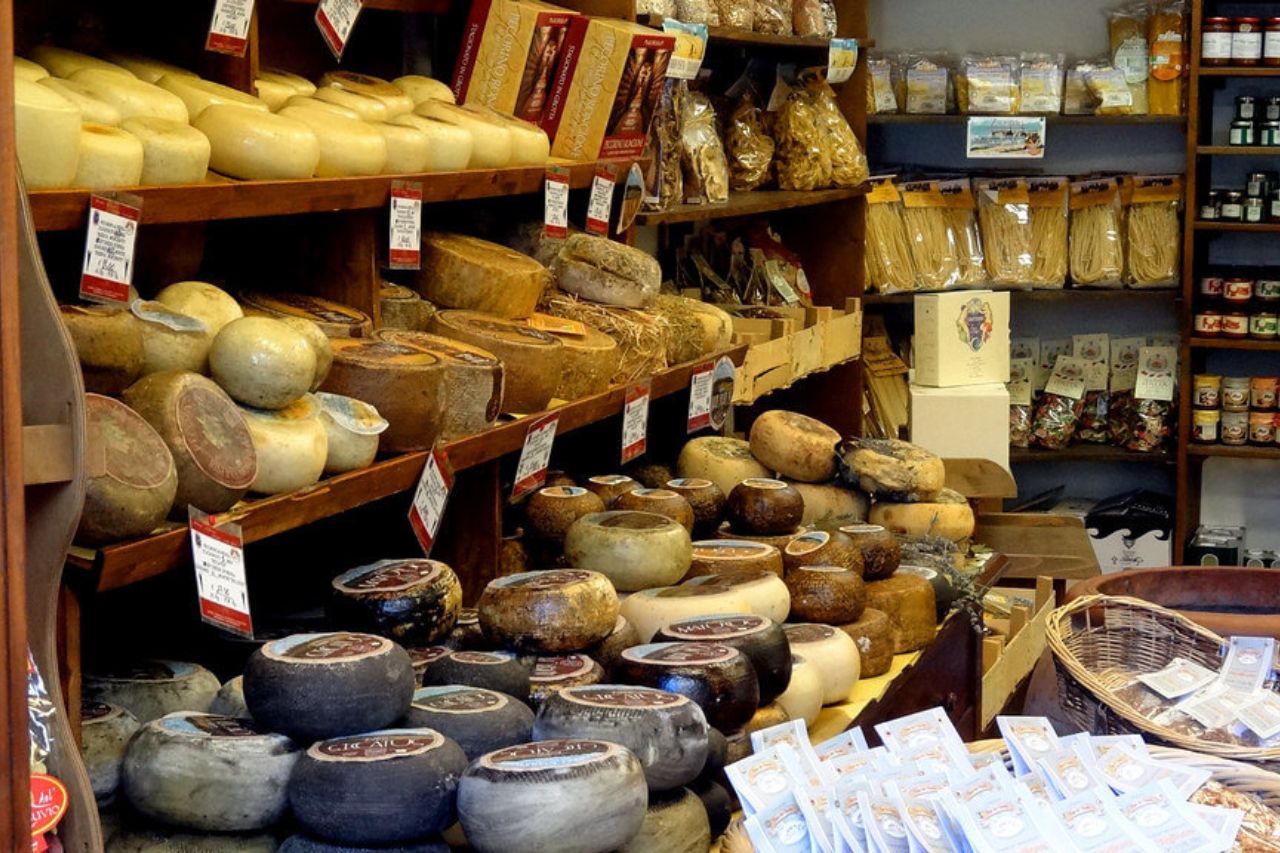
Foodies rejoice! The famed Italian sheep’s milk cheese, Pecorino, is one of the oldest cheeses in the world and offers a great deal of regional specifications, with seven distinct regulated varieties. Pienza’s Pecorino is not included in the seven, reportedly due to the intricate dynamics of the cheese world. Its lack of regulation means that it’s easier to find cheeses labeled as Pecorino di Pienza, even if they are made with imported milk. So, it’s best to go right to the source to find the Pecorino of Pienza, made with milk produced by sheep consuming the unique and resilient vegetation of the Val d’Orcia!
There are several varieties, from fresh, to various levels of aging, to special varieties flavored with wine, spices, herbs, or mushrooms. You can find Pecorino di Pienza easily in the food shops and restaurants.
The first weekend of September, there is a folk celebration of cheese called Fiera del Cacio. This fair is dedicated to pecorino cheese and other traditional foods, and involves a folkloristic cheese rolling competition held amongst the residents of the town’s various neighborhoods.
Read more: Tuscan Food – A Wealth of Pasta Sauces, Soups, and Sweets!
Wine tours
Pienza and the surrounding area offer a plethora of vineyards and organized wine tours and tastings. With a rented car, it’s easy to navigate from one vineyard to the next! The famous red wine Brunello di Montalcino comes from this area. There are many wine shops in Pienza itself that can offer local recommendations and tastings, including Enoteca Di Ghino in the center of town. In April, there is a wine festival of Val d’Orcia wines, held in San Quirico d’Orcia which is about 15 minutes away from Pienza by car.
Read more: Best Wineries in Tuscany – Dreamy Wine Trips in 2023
Shopping
The main street of Pienza, Corso Rossellino, offers many excellent shopping opportunities. Look for shops with local goods and products particular to the area, and cheese shops like La Bottega del Cacio. You’ll also find craft and artisan shops like ceramicists and leather workers, which are a go-to option for memorable and meaningful souvenirs and gifts with a unique local particularity.
Where to Stay: Best Hotels in Pienza
Hotels in Pienza offer modern elegance and historic charm all at once! These accommodations offer respite and relaxation after long days of visiting the impressive churches and monuments that Pienza has to offer.
Hotel San Gregorio
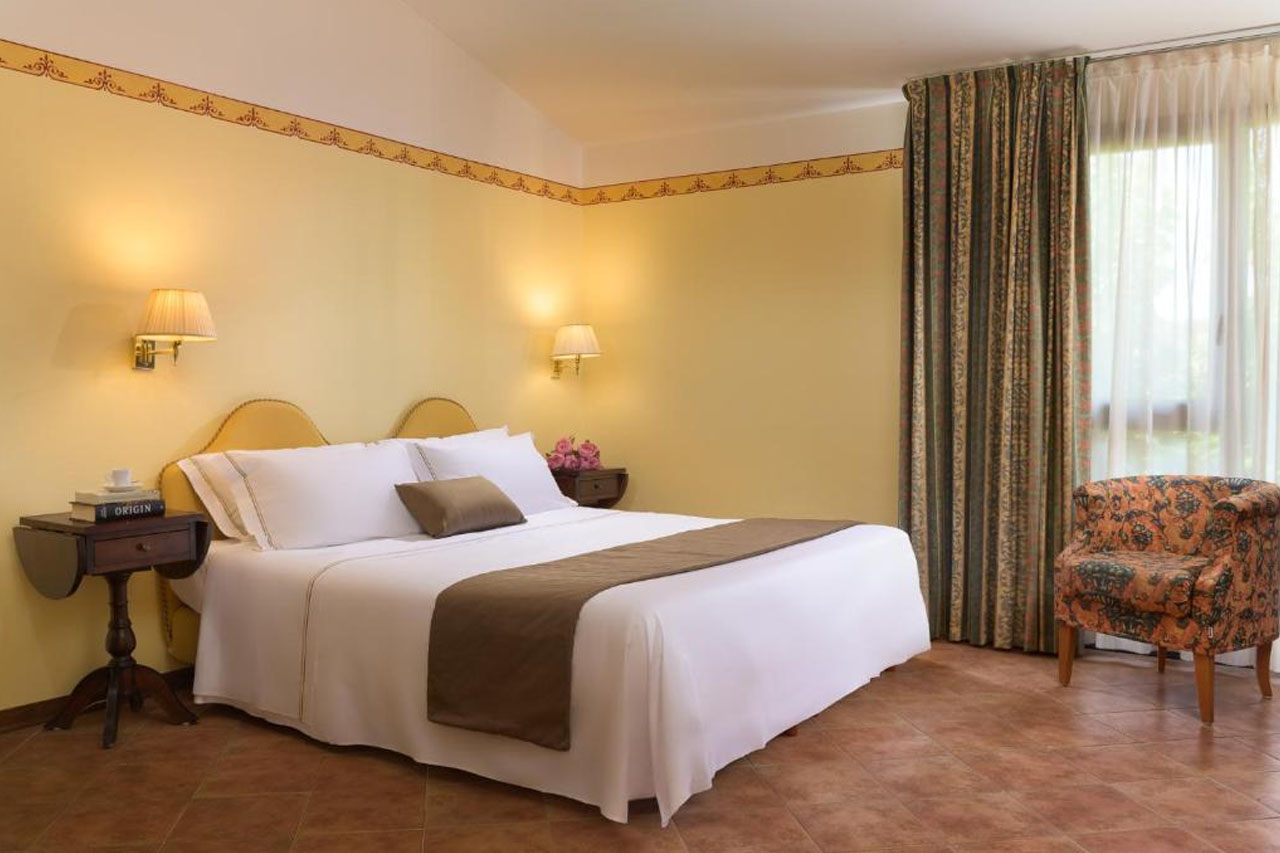
Just 100 feet from the historic center of Pienza, Hotel San Gregorio is an elegant option. From the first look, the building has a tidy and elegant presentation with a garden of hedges and a fountain out front. The hotel also has a connected restaurant that serves traditional Tuscan food.
Relais Il Chiostro Di Pienza

Built in a 15th-century convent, Relais Il Chiostro Di Pienza offers all the classic ambiance with modern luxury built in such as a pool, restaurant, and satellite TV.
Agriturismo Palazzo Massaini “Cavarciano”

For those who love nature and the countryside, nothing beats an agriturismo, where a farm becomes a hotel experience! The Agriturismo Palazzo Massaini “Cavarciano”, 3 miles from Pienza, offers a comfortable escape into the gorgeous countryside of the Val d’Orcia.
Restaurants: Where to Eat in Pienza
As home to so many excellent local delicacies – from cheese, to foraged mushrooms, to homegrown produce – local dining in Pienza is sure not to disappoint!
La Terrazza del Chiostro
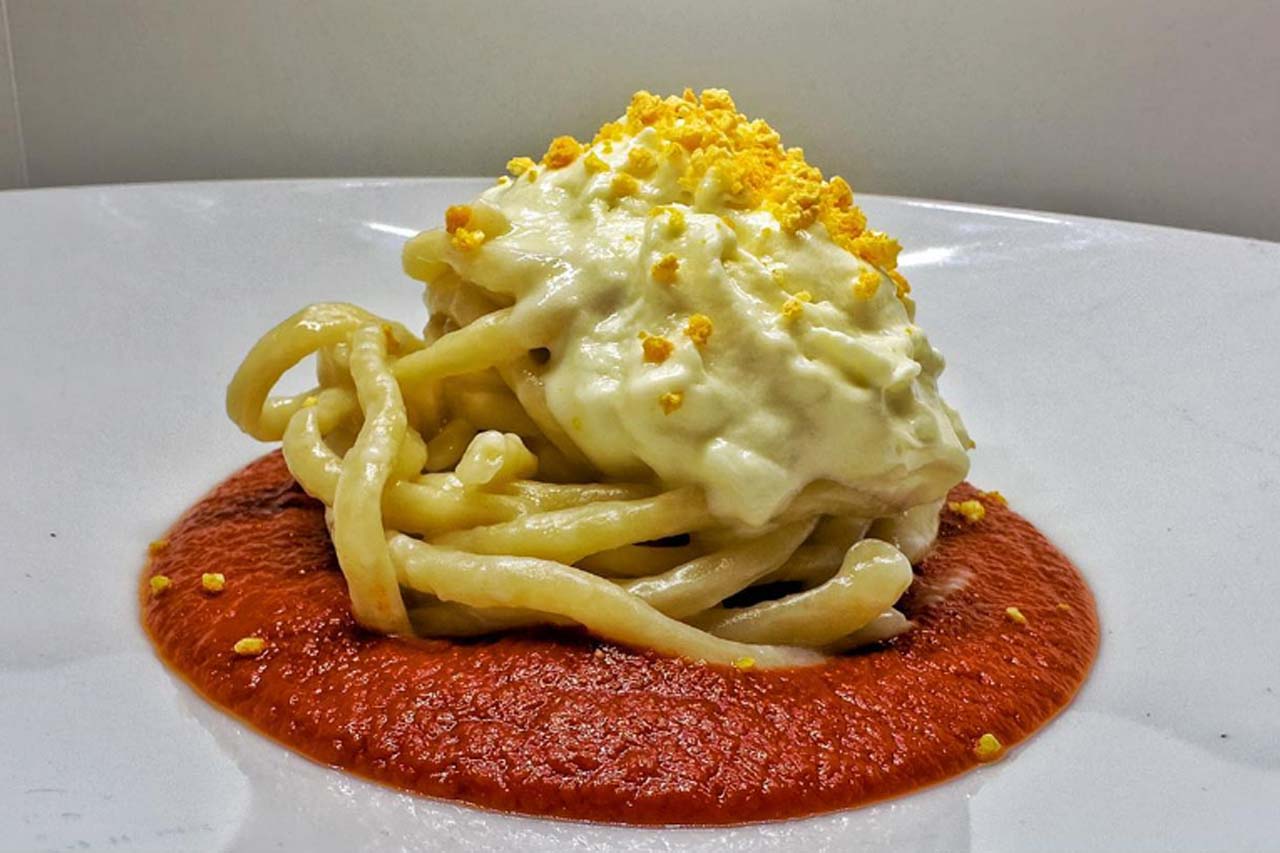
La Terrazza del Chiostro boasts an elegant dining experience boasting a terrace with a view of the valley from its outdoor seating, or opt for indoor tables in the 15th-century monastery with impressive wood-beamed interior.
Trattoria La Chiocciola
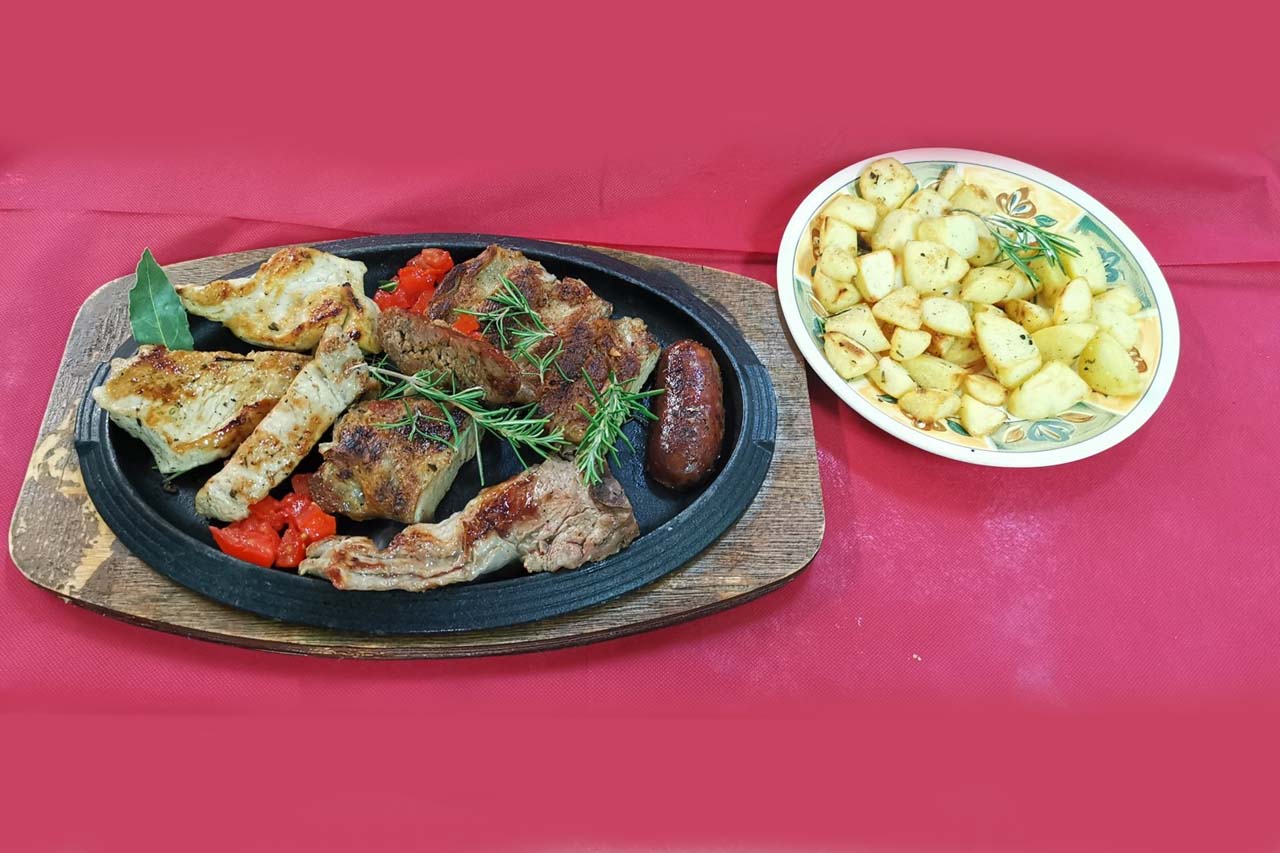
Trattoria La Chiocciola is a family-friendly traditional trattoria that offers a truly Tuscan experience. Full of simple delights that are particular to the area, the trattoria is a great place to try the famed pecorino cheese of Pienza, a bruschetta antipasto, or hearty local meat.
Ristorante Sperone Nudo
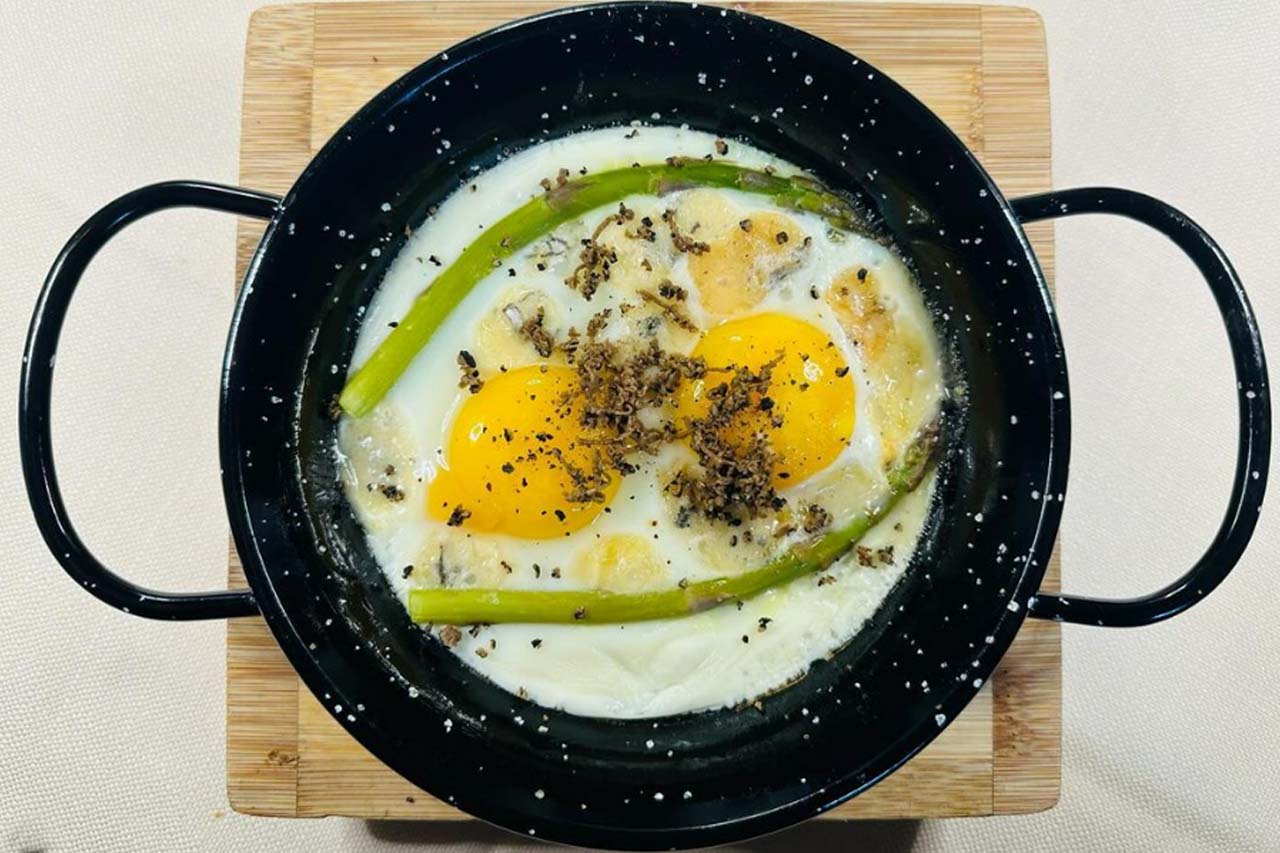
Ristorante Sperone Nudo is a tavern-style restaurant with an impressive ambiance! This is a great spot to try the local specialty of hand-rolled spaghetti called Pici. And by sure not to skip dessert!
Read more: Pasta In Tuscany – Deliciousness You Have To Try To Believe
What to See Nearby

The Val d’Orcia surrounding Pienza is full of day trip opportunities! If you’re in the area, be sure to check out Montepulciano, Saturnia, San Quirico d’Orcia, Montalcino, Monticchiello, or the Val d’Orcia National Park.
- Montepulciano is one of the nearest train stations to Pienza, so is a great option if you want to take the adventuresome route and take a bus into Pienza. In a car, it makes a great day trip. It’s a very walkable town with many streets being closed to vehicle traffic. Don’t miss the gorgeous San Biagio church just outside of the town.
- Saturnia, famous for the hot springs that the town overlooks, is about an hour and a half drive south of Pienza. In the 1300s it was used as a hideout by bandits and so was burned completely down by the authorities. It was revitalized in modern times due to the tourist draw of the thermal baths.
- Montalcino is nested in the stunning nature of the Val d’Orcia. This town is well-known for its Brunello red wine. With both a castle and fortresses, a visit to Montalcino will feel like a step back into medieval times.
- With a population of only a few hundred, Monticchiello offers true small-town Tuscan charm, and is worth a stop for a totally different feeling from the larger towns in the area. The road into the town offers sweeping views of the valley.
- San Quirico d’Orcia can be found on top of a hill halfway between Pienza and Montalcino. It was an important medieval town as it was located on a pilgrimage route from northern Europe to Rome, Via Francigena.
Explore more: Southern Tuscany – Best Towns, Where to Stay, and Itineraries
Is It Worth Visiting Pienza?

Absolutely! Pienza’s charm makes it a must-see stop on any Tuscan vacation. Rich in history, Pope Pius II set his mind to making Pienza the ideal town of the Renaissance in the 1400s. Pienza is full of architecture, art, churches, cheese, and Tuscan charm. Pienza is also a great central location from which to tour other towns and attractions in the Val d’Orcia.
A Pope’s Dream: “The Ideal Town” of the Renaissance (A Brief History!)
Pienza was originally a small village called Corsignano, and the birthplace of Enea Silvio Piccolomini – Pope Pius II. Pius hired famed Florentine architect Bernardo Rossellino to give the city an upgrade into the “ideal town” based on the urban planning aspirations of the time, and renamed it Pienza after himself. Many motifs of Renaissance architecture can be seen in the buildings of Pienza, and some are even said to have originated here.


